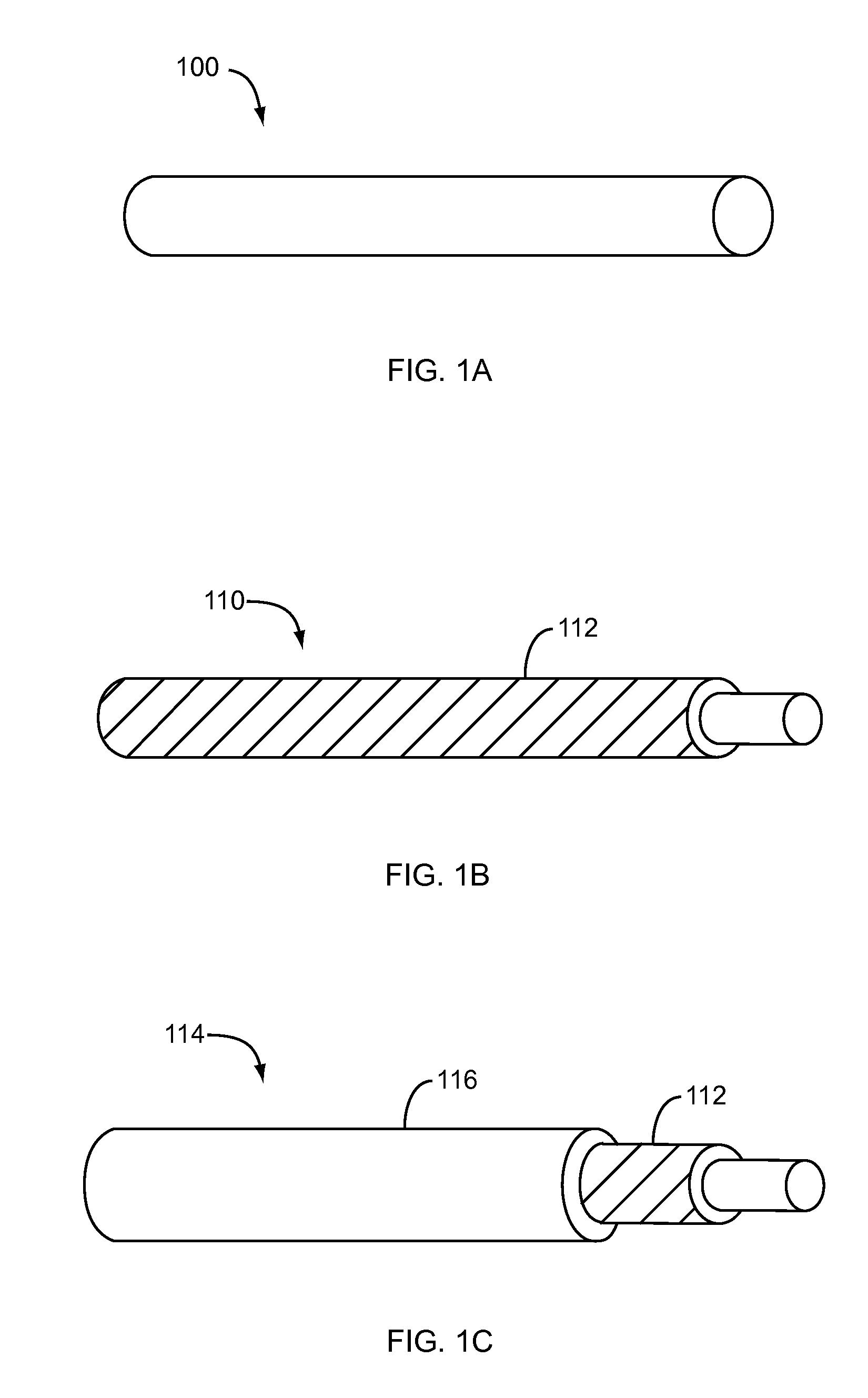Nanostructure-Enhanced Platelet Binding and Hemostatic Structures
- Summary
- Abstract
- Description
- Claims
- Application Information
AI Technical Summary
Benefits of technology
Problems solved by technology
Method used
Image
Examples
example hemostatic bandage embodiments
[0099]In an embodiment, nanostructures, such as inorganic silica nanofibers, are applied onto the surface of bandages / bandage fibers. Such nanostructures (e.g., nanofibers, nanoparticles, etc.) assist in activating the intrinsic (contact) clotting cascade, leading to the slowdown or stoppage of bleeding. The dimensions of the nanostructures are such that they provide an excellent surface for activation of the contact pathway, and thus provide a non-biological way of enhancing clotting on bandage surfaces. Such nanostructures may be nanowires, nanofibers, nanoparticles, and / or any other nanostructure type described herein. Such nanostructures may be made of silicon, silicon having a thin oxide layer, silica, potassium (including potassium nanofibers, nanowires, or nanoparticles), silicon nanostructures functionalized with potassium (e.g., silicon nanofibers functionalized with potassium), etc.
[0100]In example embodiments, bandage materials that may be coated and / or otherwise enhanced...
example expandable
and Absorbent Hemostatic Material Embodiments
[0128]Expandable polymers have been used for wound closure to prevent blood loss after endoscopic surgery where the entry / exit point of the endoscopic device is through a blood vessel. An example of such device is the Angioseal™ vascular closure device sold by St. Jude Medical of St. Paul, Minn. Absorbent materials, such as cotton gauze or tampon structures, have also been used for wound closure. In a device using an expandable material, blood and / or other fluids are absorbed by the material, and the material swells to cause a physical barrier. Static blood may be entrapped within pores of the material, which clots due to stasis. It would be advantageous if the blood within the expanded material could be made to clot more rapidly. Embodiments of the present invention enable an increased rate of clotting for devices based on expandable materials and non-expandable materials (e.g., cotton-based, such as gauze, tampon, and other such non-exp...
embodiments
Example Hemostatic Material Embodiments
[0136]Various materials have been developed to help stop wounds from bleeding excessively and to increase a rate of clotting. Such materials may be used in surgical procedures and / or by first responders to traumatic events, for example. Existing bulk hemostats have disadvantages, however. For example, it would advantageous if existing bulk hemostats functioned more quickly, were resorbable, and / or did not have an exothermic reaction with blood. Embodiments of the present invention overcome these limitations of conventional bulk hemostats.
[0137]In an embodiment, nanostructures, such as nanofibers, are co-formulated with glass microspheres (either solid or porous). This co-formulated material has an enhanced hemostatic activity that is not purely additive—i.e., the combination of the nanostructures and glass microspheres has a faster hemostatic activity (e.g., when measured in a TEG) than the nanostructures or glass microspheres alone, which is n...
PUM
| Property | Measurement | Unit |
|---|---|---|
| Structure | aaaaa | aaaaa |
| Density | aaaaa | aaaaa |
| Adhesion strength | aaaaa | aaaaa |
Abstract
Description
Claims
Application Information
 Login to View More
Login to View More - R&D
- Intellectual Property
- Life Sciences
- Materials
- Tech Scout
- Unparalleled Data Quality
- Higher Quality Content
- 60% Fewer Hallucinations
Browse by: Latest US Patents, China's latest patents, Technical Efficacy Thesaurus, Application Domain, Technology Topic, Popular Technical Reports.
© 2025 PatSnap. All rights reserved.Legal|Privacy policy|Modern Slavery Act Transparency Statement|Sitemap|About US| Contact US: help@patsnap.com



